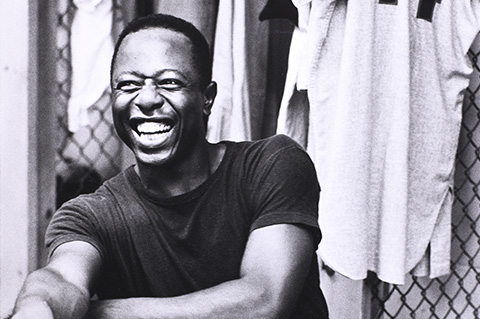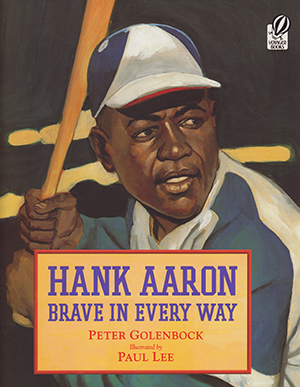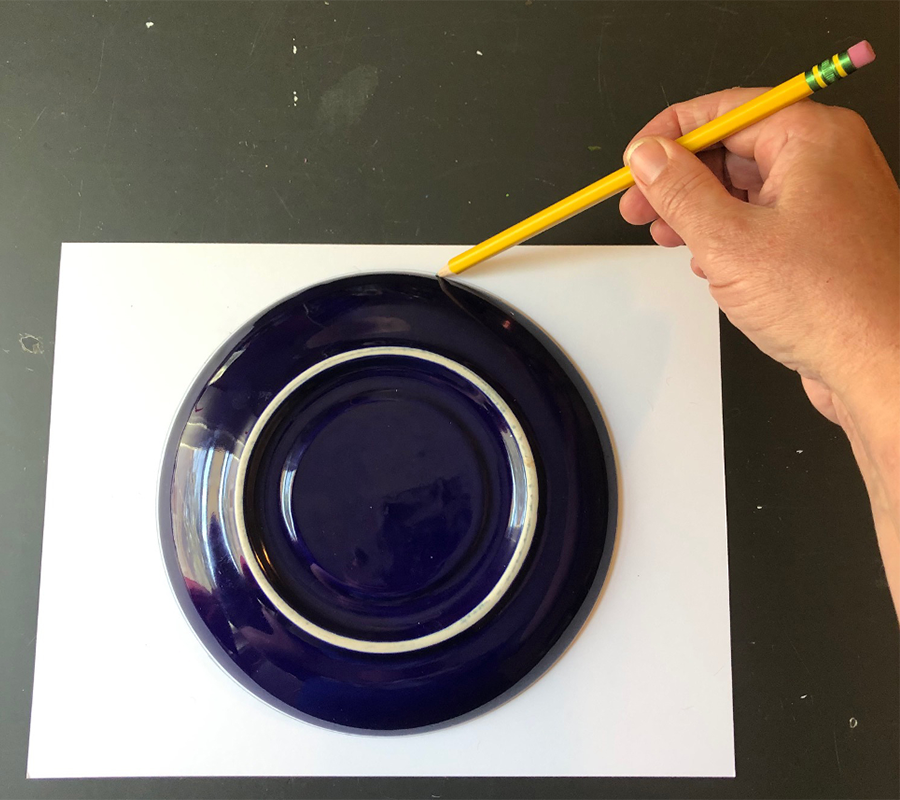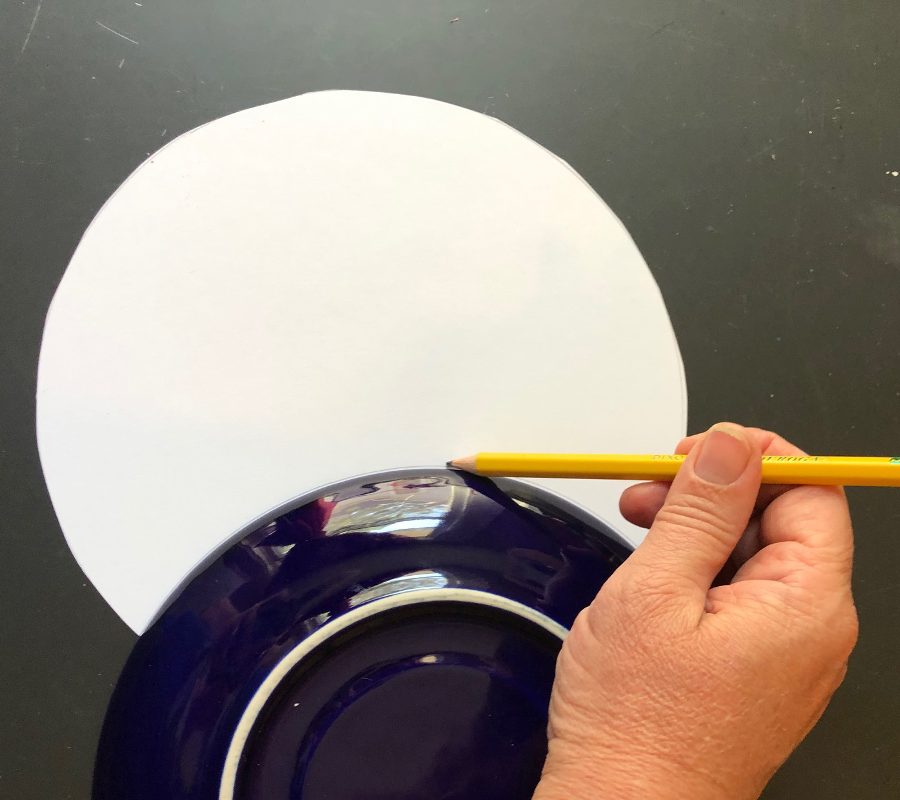
Baseball's Brave Hank Aaron
Enjoy a story and an art activity for three- to five-year-olds inspired by baseball's brave Hank Aaron, an image of whom appeared in the exhibition "And Something Magical Happened": Baseball Photographs by Walter Iooss.
The photograph
Atlanta Braves baseball legend Hank Aaron drew attention from sports fans across the country while in pursuit of Babe Ruth's home run record, and he received thousands of letters daily. Some were congratulatory, but many were angry that an African American was poised to eclipse Ruth and break baseball’s most hallowed record.
Photographer Walter Iooss was assigned to follow Hank Aaron for a portion of the 1969 season. Usually serious of expression during this intense period of his career, Aaron burst into a genuine, hearty laugh as the legendary Satchel Paige entered the locker room. While not the typical game-making "decisive moment" Iooss usually sought to capture at that stage of his career, this moment of joy captures an intimate look at Hank Aaron the man.
Click here to see the virtual exhibition of "And Something Magical Happened": Baseball Photographs by Walter Iooss, including the photograph of Hank Aaron.

The book
Hank Aaron, Brave in Every Way by Peter Golenbock and illustrated by Paul Lee (published in 2005 by HMH Books for Young Readers). Intended for readers in Pre-K through third grade.
According to Kirkus Reviews, this book "takes the real-life tale of baseball slugger Hank Aaron and fashions it into a fable of hope, endurance, and faith."
Click here to purchase the book from the museum's new independent bookseller e-commerce site, and your purchase will benefit the Carlos Museum.

The project
Encourage your child to use creative problem-solving to figure out what materials can be found to create a paper baseball with red stitching.
- Heavy paper white paper (This can be card stock, watercolor paper, or the inside cover of a notebook)
- Pencils
- Scissors
- Something round to trace (See what your child can find! A plate? A saucepan lid?)
- Something to make holes (A hole punch with a “big reach” is best, but a skewer or even the tip of the scissors would work)
- Red pipe cleaners, red string, or red shoelaces!
Encourage your child to use creative problem-solving to figure out what materials can be found to do the project.

Step One

Trace a circle with a plate or other circular-shaped object on heavy white paper.
Step Two

Cut out the circle.
Step 3

Using the object, trace two partial circles on each side of your big circle.

Step 4

Draw two rows of six dots on each side of the partial circles (8 rows in total).
Step 5

Punch or poke holes in all dots.
Step 6

Stitch!

Looping the stitches as shown makes the best “baseball effect” but let your child do it any way they like. If the paper is heavy enough, children can stitch their baseballs, then take out their stitches, and do it again different ways.
Step 7

Play ball!




